Vienna 2016
Alberto
10th European Registrars Conference
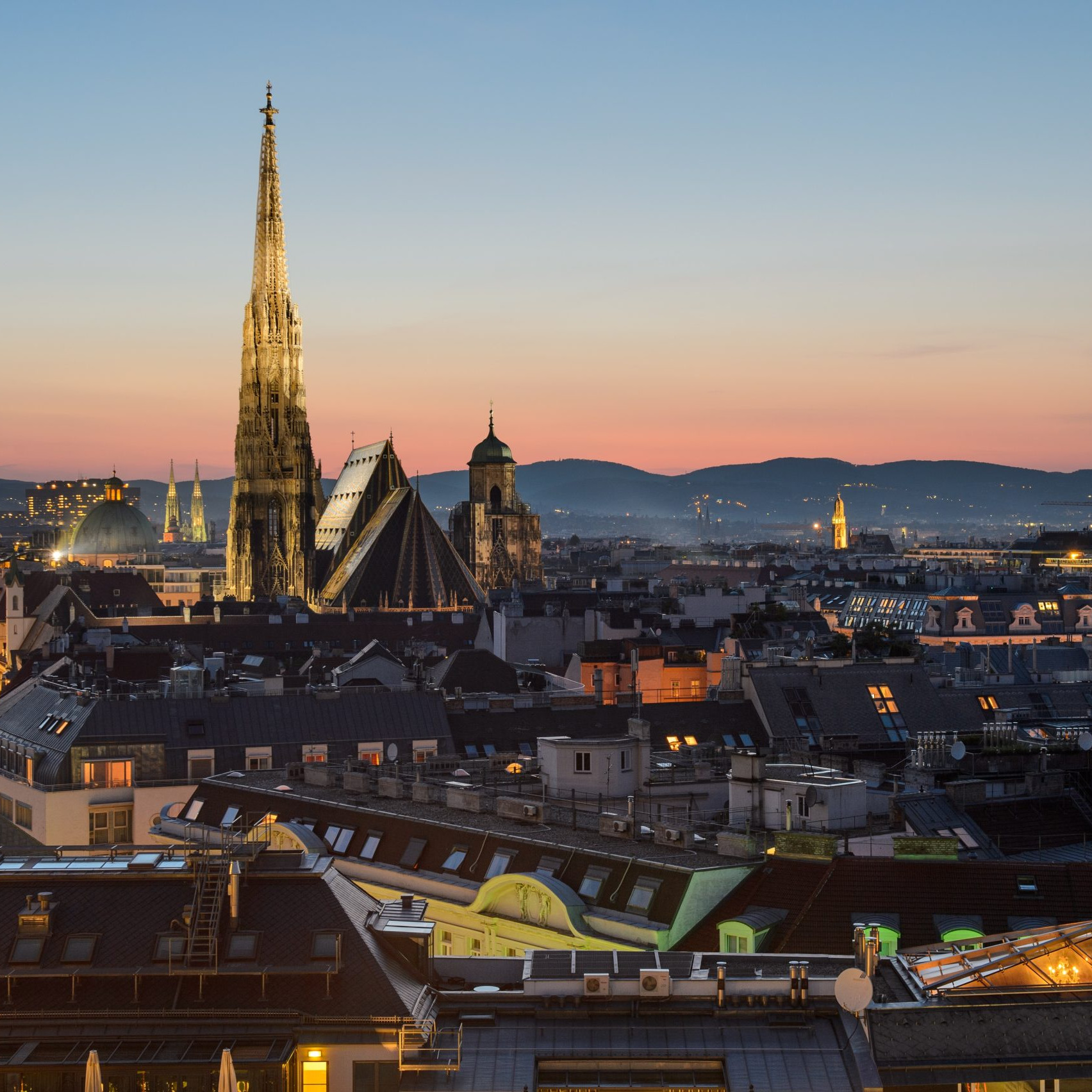
When:
8-10 June 2016
Where:
Hofburg Vienna
Filled with enthusiasm in the summer of 2014, we – the Austrian Registrars Committee (ARC) – began the work of organizing the conference in Vienna. The European Registrars Conference is taking place for the tenth time in 2016. For you, our guests, and the event, we needed to create a fit and proper ambiance in “our” city.
To be sure, the vision of gathering 700 colleagues in Vienna spurred us on; but one thing was of utmost importance for us from the outset: Keeping things light and lively, and maintaining our sense of humor. That meant thinking outside the box and taking uncharted paths – literally and figuratively – with the conference organisation.
While putting the program together, we were especially diligent in searching out the latest developments in our branch, nurturing the exchange of experience and knowledge through panels, workshops and a conference app, as well as in the form of an interactive survey, in which we invite you to take part.
Art’s noble and lofty domain – and that epitomizes our conference humor – is brought down to eye level and observed head on.
We trust that the main program topics – Art and Law, Materials and Standards, I am … and Digital Museum – to each of which a half day is dedicated, offer inspiration, know-how and a platform for discussion to all participants. And the conference will also prompt us to “contemplate our own navels” by asking the question “Who are we?”
from the official conference program
Opening introduction
Christiane Rainer Chair of ARC and ERC2016 Steering Committee, Austria
Keynote Speech
Cultural heritage, the refugee crisis and building sustaina ble, peacefu l communities
Jasper Visser, Senior partner at VISSCH+STAM Strategic Services, Museum of the Future, Netherlands
Main topic: art and the law
International loan agreements: a comparison
Sandra Sykora, Lawyer, Art Historian, Switzerland
Immunity from seizure and due diligence: what registrars need to know
Freda Matassa, Director, Matassa Toffolo Ltd., Art Collections Management, UK
Loan agreements: necessary evil or frivolous legal games
Ernst Ploil, Attorney-at-law, Austria, ploil / krepp / boesch Rechtsanwälte GmbH
A registrar’s survival guide to the copyright jungle
Florian Schmidt-Gabain, Attorney, Switzerland
Main Topic: materialities and standards
Alteration or damage? developing an instrumental method for the precise monitoring of transportation damages
Christoph Krekel, Professor for Archaeometry, State Academy of Art and Design in Stuttgart, Germany
There is no best rental crate
Martijn de Ruijter, Conservator and Collections Manager, Royal Tropical Institute, Netherlands
Insect pests out of the box
Pascal Querner, Researcher, Univ. of Natural Resources and Applied Life Sciences, Austria
Inside the box. How to be museum standard, green and cheap?
Julian Fors, Storage Manager, National Museum of Art, Architecture and Design Oslo, Norway
Out of the dark into the light – considerations on light source and light levels
Stefan Röhrs, Deputy Director, Rathgen-Foschungslabor, Germany
Main topic: I am…
Backstage – What viewers shouldn’t find out
Julia Voss, Art Department Head, Frankfurter Allgemeine Zeitung, Germany
Registrars: training for the future and gender perspectives
Abigail Harrison Moore, Head of the School of Fine Art, History of Art and Cultural Studies at the University of Leeds, UK
Jen Kaines, Registrar and Collections Manager, Leeds Museums and Galleries, UK
Laura Walsh, Registrar and Display Technicians Manager, Royal Armouries, UK
Main topic: digital museum
Use and re-use of data. How registrars impact the future of museum
Harald Krämer, Associate Professor, School of Creative Media, City University of Hong Kong
The transformation of the condition report: from color-coded pens to digital media
Jennifer Hefner, Head Registrar of the American Federation of Arts, Co-Founder of Articheck, USA
Professional digital asset manage ment systems
Dirk Lock, CEO, SOLVATEC Deutschländer and Lock GbR, Germany
Plenary Session
Presentation of our interactive registrars survey (collected during the conference)
ARC Austrian Registrars Committee
The european registrars initiative
Wendela Brouwer, Head Registrar’s Office at Rijksmuseum Amsterdam, Netherlands
Veerle de Meester, Exhibition Manager, Royal Museum of Fine Arts Antwerp, Belgium
Exhibition and collection specialists in Asia
Veronica Castillo, Head of Collection and Exhibition Services, M+, Hong Kong
Presentation by ARCS
Tamara Johnston, Treasurer and Founding Board Memeber of ARCS (Association of Registrars and Collections Specialists), USA
Workshops
Integrated pest management (IPM)
Pascal Querner Researcher, University of Natural Resources and Applied Life Sciences, Department of Integrated Biology and Biodiversity, Research Institute of Zoology, Austria
Application programming interfaces (API) – concepts and basic functionalities
Dirk Lock, CEO, SOLVATEC Deutschländer and Lock GbR, Germany
Display cases: are they truly impermeable?
Johannes Strecha/Markus Wiechert, Artex Museum Services, Austria
Cybercrime in the art world
Richard Nicholson, Executive Director & Head of Fine Art – UK & Europe, Willis Towers Watson
Beltracchi – the art of forgery
Filmscreening Documentary, Germany 2014 (93 minutes), German Film Academy Award “Lola“ for “Best Documentary“, 2014
Cultural heritage, communities and migration
Jasper Visser, Senior partner at VISSCH+STAM Strategic Services, Museum of the Future, Netherland
Do you actually get, what you need? design your own insurance contract
AON
Become a member of Registrarte to browse all content
Helsinki 2014
Alberto
9th European Registrars Conference
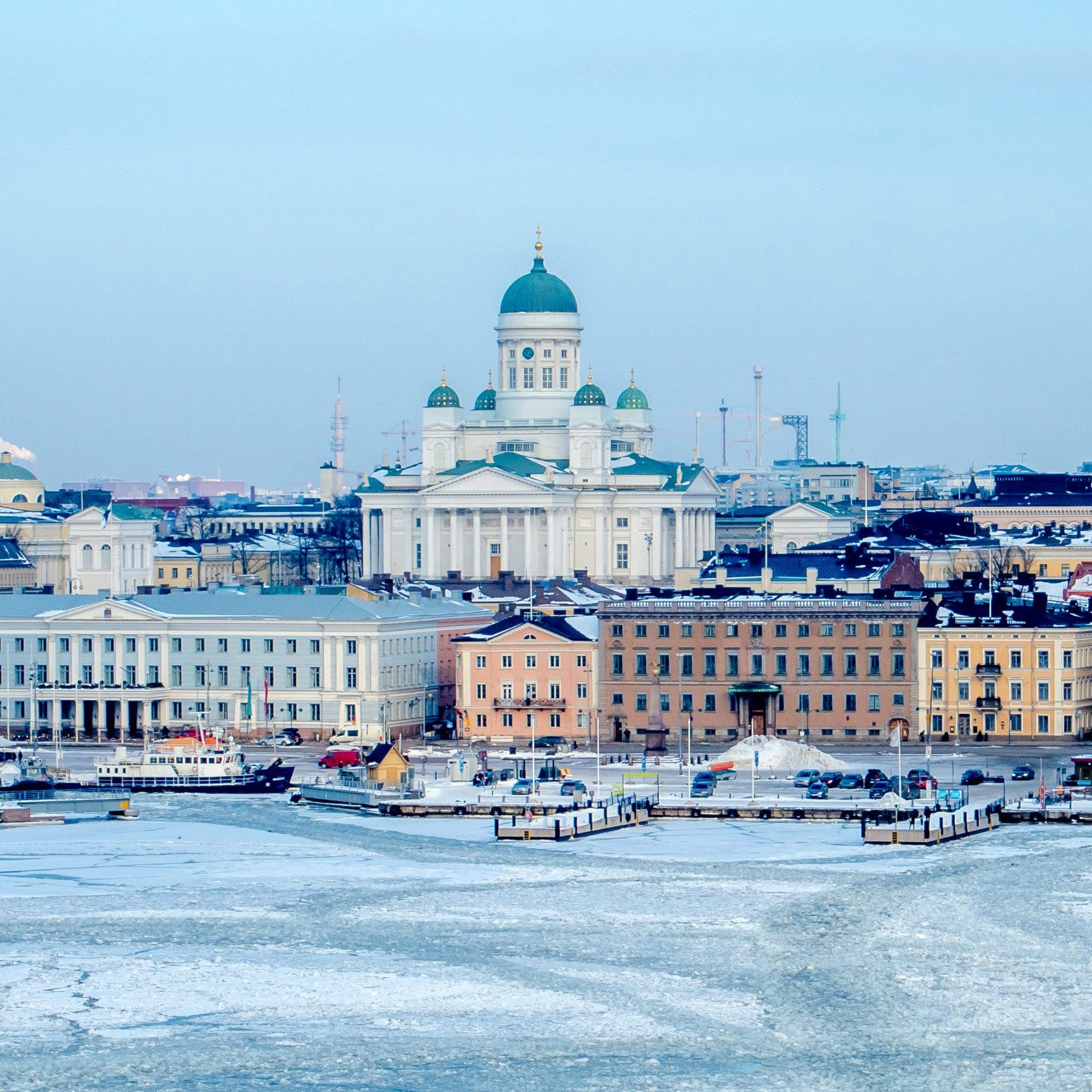
When:
9-10 June 2014
Where:
Helsinki Kunsthalle
Around 500 registrars, collection managers, curators and transport and insurance professionals gathered in Helsinki for the 9th European Registrars Conference, organised by the Nordic Registrars Group, the association of registrars from Finland, Denmark, Norway and Sweden. Under the leadership of President Kristina von Knorring (National Gallery, Finland), the conference offered an interesting and dynamic programme, with talks on security, risk management, courier services, transport challenges and art theft, art valuation and insurance, disaster preparedness and a look at the future of the registrar.
Opening introductions
Kristina von Knorring, Senior Registrar, Finnish National Gallery / Char of the ERC 2014
Jan Förster, Host, Director, Helsinki Kunsthalle, Finland
But is it art?
Daniel Birnbaum, Director. Moderna Museet, Sweden
Transport and document security
Trygve Lauritzen, Head of Security and Operations, Munchmuseet, Norway
Global risk art survey program
Simon Mears, Consultant – Security Risks and High Value Asset Protection, Denmark
Holistic risk management for museums
Pascal Matthey, Head Specialty Lines Risk Engineering, XL Group, Switzerland
The role of the courier
Thor Nørmark-Larsen, Section Leader Registrar’s Office, National Gallery of Denmark.
The Nordic way
Marika Reuterswärd, Curator and Registrar, Malmö Konstmuseum, Sweden
Thor Nørmark-Larsen
Courier training at the Finnish National Gallery
Kirsi Hiltunen, Senior Conservator, Finnish National Gallery
Assessing risk in lending and borrowing
‘I look forward to hearing from you’: a lending and borrowing scenario
Kate Parsons, Head of Collections Management, Tate, UK
Jane Knowles, Head of Exhibitions, Chair, UK Registrars Group
Lending and borrowing – calculating risks
Eva-Lena Bergström, Department Director, Nationalmuseum, Sweden
Panel discussion
Shipping challenges
Public procurement rules – concluding a framework agreement on art transportation
Valtteri Nieminen, CEO of Finnish Procurement Lawyers Attorneys Ltd.
The European air freight security regulations – latest updates on fine art transportation
Hans-Ewald Schneider, President, Hasenkamp, Germany
Preventing the illicit trade of our cultural heritage – a shared responsibility
Mark Starling, Chairman ICEFAT / Managing Director PACART, Canada
Art theft and recovery
Art lost and found
Christopher A. Marinello, Director and Founder, Art Recovery International, USA
The robbery of the Scream and Madonna from Munchmuseet in 2004
Rune Sivertsen, Detective Superintendent, Norwegian Police
Valuation and insurance
Auction house valuations for sales and insurance purposes
Dr. David Bellingham, Programme Director, Sotheby’s Institute of Art, UK
Insurance – non insurance
Lora Houssaye, Exhibitions Registrar, Centre Pompidou, France
Aurore Basly, Exhibition Project Manager, Musée du Louvre, France
State indemnities and insurance – experience throughout Europe
Dr. Stephen Zilkens, Zilkens Fine Art Insurancebroker GmbH, Switzerland
Be prepared
Disaster relief / AIC-Cert
Julie Bakke, Chief Registrar, Museum of Fine Arts, Houston, USA
Fire at the museum
Adina Ekbergh, Security Manager, Museum of Ethnography, Stockholm, Sweden
Touring exhibitions
International touring – managing the unexpected
Renée Pfister, Renée Pfister Art & Gallery Consultancy, UK
Touring Turner from Tate: a travelling exhibition case study
Kathy Richmond, Collection Registrar, Tate, UK
Moving collections
Nationalmuseum in Stockholm: moving collections and organisations
Per Hedström, Director of Exhibitions and Deputy Director of Collections, Nationalmuseum, Sweden
Storage relocations at the Museum of Islamic Art, Qatar
Marie-Astrid Martin, Collection Coordinator, Museum of Islamic Art, Qatar
Collection management challenges of a new museum
Nancy Konstantinou, Registrar, Museum of Islamic Art, Qatar
Relocation of XXL collections – you can’t make an omelette without breaking eggs
Joachim Hüber, Museum Consultant, Prevart Ltd, Switzerland
Tools for the future
Making the iPad work for the registrar
Brent Mitchell, Head Registrar, Modern Art Museum of Fort Worth, USA
Drones might fly – is the sky the limit for technology in collection management?
Sheila Perry, Collections Information System Manager, National Galleries of Scotland, UK
Finale
We were promised jetpacks: what does the future hold for registrars?
Trecey J. Berg-Fulton, Contract Registrar & Museum Consultant
The next generation: breaking barriers with the project Registrar Trek
Angela Kipp, Collection Manager, TECHNOMUSEUM, Mannheim/Co-founder of Registrar Trek, Germany
Closing session
Become a member of Registrarte to browse all content
Edinburgh 2012
Alberto
8th European Registrars Conference
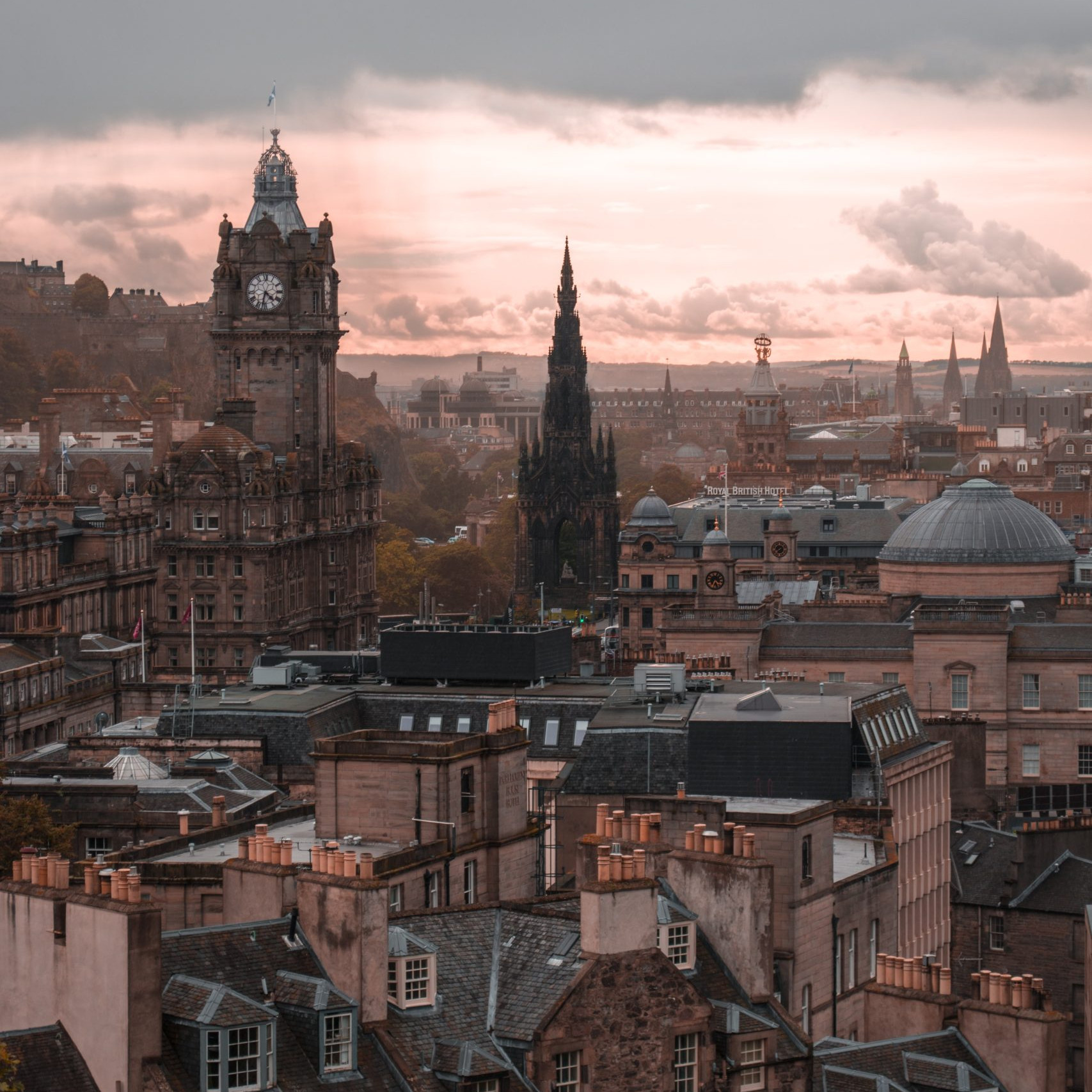
When:
5-6 November 2012
Where:
Edinburgh, Pentland Auditorium
Think smart!
Public resources are dwindling: this was the premise and framework of almost all the speeches at the conference in Edinburgh. The economic crisis is overwhelming public administrations in European countries and forcing museums and cultural venues to come up with new ideas and a new approach to work. How can collection directors and registrars cope with the enormous difficulties caused by cuts? This is the meaning of the Think Smart title of the conference.
Any proposals?
With dwindling resources, it is necessary to reinvigorate the cultural offer in simple and convenient ways. For example, by responding to the public’s demand for in-depth cultural information with a greater curatorial and popularising commitment.
In a brilliant talk, Paolo Viscardi, naturalist and curator of the Horniman Museum & Garden in London, demonstrated how to attract the public’s curiosity by deepening studies of objects in the collections to offer non-trivial information. Their museum chose to increase access to the collections in storage and to strengthen the benefits of collaborative work with projects such as ‘Object in focus’: single objects not particularly valued in the museum are reinterpreted and exhibited in small local museums that become co-organising partners. In other words, a smarter approach to lending is a way to maximise the potential of collections, developing collaborations between parties and supporting the sector and its own organisation.
Leeds Museums, on the other hand, focused on training and collaboration with the university and local government. In 2009 they developed a training model for future registrars, a specific museum internship project aimed at graduates with the objective of facilitating their entry into the sector. The training, which is of a very high quality and partly paid, is based not only on practical experience but also on knowledge of museums and disciplines related to museum work. The internship programme enables the student in the postgraduate schools of Art History and Cultural Studies at the University of Leeds to gain experience of working as a registrar in national and local museums. And at the same time undergraduate study provides the necessary knowledge to place the role of registrar in the right context.
The intervention of a group of French registrars from AFROA was devoted to travelling exhibitions and collections, with which French museums seek new financial revenue. While until a few years ago, travelling exhibitions of collections mainly concerned museums under renovation, these are now projects that respond to the growing problem of self-financing.
The Grand Palais, which has no collections of its own and is only an organiser, co-organised 13 travelling exhibitions with collections of other museums in 2011-12. The Centre Pompidou and the Louvre opened new venues (Centre Pompidou Metz and Louvre Lens). Several projects aim at enhancing museum collections with exhibitions in national venues and abroad at co-organising institutions that are also interested in the know-how of French museums, which thus even ‘export’ curators and registrars. As in the case of the travelling exhibition organised in Azerbaijan by French registrars who were there for two months to plan transport and train the local team. From the former Soviet countries, which are quite rich and resourceful, comes a strong cultural demand for Europe.
For French museums, in short, it has become normal to share the organisation of incoming and outgoing exhibitions with other institutions. This implies a new management by the museum.
From the registrars’ point of view, how are these initiatives managed? How do they share responsibilities, costs and organisation? What are the new tasks of registrars?
In a workshop organised in Paris in June 2012, AFROA gathered the experiences of 30 registrars and exhibition co-ordinators on shared costs and responsibilities; loan requests; transport and escorts; contracts; insurance; conservation. The results of the survey will be published on the AFROA website.
The French registrars concluded by saying that the most useful tools to face the new challenges can be summarised as follows: anticipate – communicate – share.
Think fair! The registrar is increasingly a project manager.
Other speeches and parallel sessions covered specific topics, including the government guarantee in the relationship with private individuals, due diligence, immunity from seizure, European standards in the field of transport, and also a speech by a representative of the Egyptian committees of registrars, curators and conservators set up after the events of the ‘Arab Spring’ to inventory and document damage and draw up lists of lost works.
At the end of the proceedings, greetings from the various associations present and a farewell visit to Helsinki, venue of the next conference in June 2014.
Plenary Session 1: Think Smart! Partnerships and Sharing
Opening introductions
Jon Astbury, Chair of the UKRG
Reform and Cuts
Jeff Dunn, Glasgow Museums
Smarter Loans
Sally Colvin, Museums Association
Objects in Focus – Smarter Loaning
Helen Merret & Paolo Viscardi, Horniman Museum, London
Sharing Collections
Jacqueline Ridge, National Galleries of Scotland
All panel discussion and open floor debate
Chair Kate Parsons, Tate, London
Parallel Session 1: Think Smart! Partnerships and Sharing
Museum partners with model maker’s guild to save collection
Lynn-Marie Richard, Maritime Museum, Halifax, Nova Scotia, Canada
Think Smart – Registrar training for the future
Jen Kaines, A Harrison Moore, & Cassia Pennigton
Due diligence
Freda Matassa, Freelance Registrar, London
The importance of materials & case construction
National Galleries of Scotland Technicians with Momart
Shipping & Couriering Objects by Air
David Giles, Momart and Duncan Capp, Constantine
Parallel Session 2: Think Smart! Digital
The narrative of objects: conservation, capture and collaboration
Arielle Juler and Paul McNulty, National Galleries Scotland
Towards a paperless print room
Sheila Perry and Ottavia Tonelli, National Galleries Scotland
The ups and downs of collections and technology
Tracey Berg-Fulton, Pennysylvania, USA
Touring Exhibitions – Contracts and Public Bids from an Agent’s Perspective
Ben Adams, Constantine, LP Art, France and SIT, Spain
The importance of materials & case construction
National Galleries Scotland Technicians with Momart
Shipping & Couriering Objects by Air
Stuart Brown, Momart and Duncan Capp, Constantine
Parallel Session 3: Think Smart! Moral, Ethical & Practical Considerations
Shared Liabilities
Blackwall Green
Public Benefit and Private Interest
Daniel Slater, White Cube, London
After the Revolution
Ghada Tarek and Doha Fathy, Egyptian Museum, Cairo, Egypt
Stop me if you’ve heard this one before: the loan of the Cyrus Cylinder to Iran
Dean Baylis, British Museum
The New European Packing and Transport Standard
Freda Matassa, Florence Caillieret, Valerie Haerden, Cindy Zalm
Smarter Exhibitions
Jane Knowles, Royal Academy, London and Francesco Donadio, Constantine
Project Management for Museum decants
Mark Hunt, Constantine and the Imperial War Museum
Object Movement & Technical Project Management
John Kidd, Momart
Customs Awareness
Steve Gourley, Momart
Plenary Session 2: Think Smart! Income Generation
Maximising your collection: creating a touring exhibition with AFA
Jennifer Hefner and Anna Evenhouse, American Federation of Arts
Touring Exhibitions and Collections
M. Etave, R. Beaujean-Deshamps, L. Petit, K. Cartacheff, V. Lagane, S. Maziere, France
Concessions for cash or the new way forward?
Janice Slater, National Gallery of Scotland
Closing Address and hand over to the 2014 Organising Committee
Become a member of Registrarte to browse all content
Amsterdam 2010
Alberto
7th European Registrars Conference

When:
8-9 November 2010
Where:
Amsterdam, Concertgebouw
The 7th European Registrars’ Conference ERC2010 was organised by the Netherlands Registrars Group – NRG, at the Concertgebouw in Amsterdam.
The programme, centred on the theme Being Green, alternated between plenary sessions, workshops and seminars, which dealt with various topics such as sustainability in museums and the use of management systems, as well as “green” practices and procedures in the face of an increasingly complex legislative context concerning the circulation of works of art.
Below are the topics and interventions addressed.
Welcome, Introduction, Wrap up
Cindy Zalm, chair Netherlands Registrars Group
Michiel Nijhoff
Paul Spies
Max Meijer
Keynotes
Museums, Registrars and Sustainability
Maurice Davies
Air Freight Safety – European Legislation on Air Freight, Air Freight Safety and Cargo Screening
René Italiaander
TSA (Transportation Security Administration) in the USA
Scott Pfeifer
A Carbon-Neutral Research Centre for Beauty
Randy Klinger
Lending to Europe: an update
Frank Bergevoet
The Art of Transitions to Become Green
Derk Loorbach
Procedures at Museum Ludwig, Cologne
Beatrix Schopp
Sessions
Sustainability and Climate Control in Museums
Bart Ankersmit
New Approaches to Museum Depots
Hans-Ewald Schneider
Sustainable Storage as Result of a Preventive Approach
Wouter Hijnberg and Marco Martens
Green, Red, Black: Analysis from the Going Green Survey
Stephen Mellor
The Greening of Fine Art Transportation: What Colour is your Crate?
Greg Gahagan, Klaus Hillman and Jonathan Schwartz
Registrars at the Centre of Collections Mobility
Marjolein Cremer
Will Being Green Influence Fine Art insurance?
Stephan Zilkens
The Loan is Insured = Green Light?
Cees Kortleve
From Manual Inventory Books to Digitized Inventory Records: A Preliminary Exploration of the National Palace Museum, Taiwan
Pang-Yen Cheng
Vibrrrrrrrrrrations. – The Impact of Vibration on Works of Art
Bill Wei
Energy-optimized Rebirth: The Renovation of the Wilhelm-Hack-Museum in Ludwigshafen am Rhein
Reinhard Spieler
How to Find a Needle in a Haystack? Implementation of RFID as an Improvement in the Management of a Scientific Collection: the Case of Institut Català de Paleontologia, Barcelona
Laura Celià
Experience with RFID Technology at Apice in Florence
Laura Reina
An International Concern: The Bizot Group Questionnaire and the V&A’s Approach to Becoming a Greener Museum
Sandra Smith
Panel discussion
Towards a new European Organisation: Sustaining the Knowledge of European Collection Mobility
Workshops
Tracking the Collection: Integrating Location Administration in Your Adlib Database
Judith van Gent, Annelies de Mey and René van de Heuvel
Registrar, a Reference Description
Herma Hofmeijer
Become a member of Registrarte to browse all content
Garanzia di stato
Alberto
Una visione in prospettiva
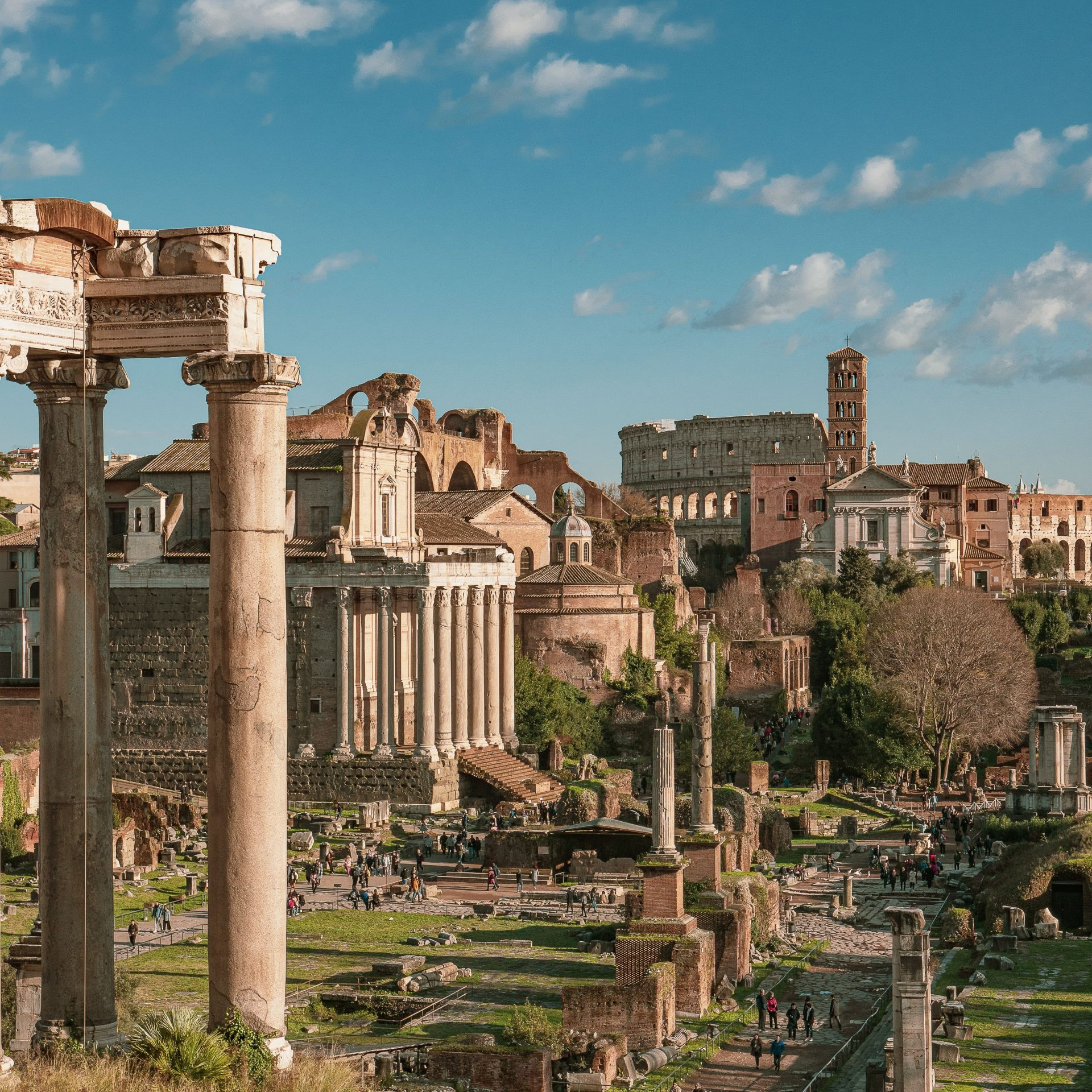
Quando:
Roma, 8 Giugno 2009
Dove:
Sala Conferenze della Biblioteca del Complesso Monumentale di San Michele a Ripa Grande
A cura di:
Registrarte in collaborazione con il Ministero per i Beni e le Attività Culturali
Alla giornata, presieduta dalla presidente di Registrarte Tiziana Giuberti che ha introdotto brevemente i lavori e ha presentato i relatori, hanno partecipato circa settanta studiosi e professionisti del settore, provenienti da tutta Italia.
Per prima ha preso la parola Maria Vittoria Marini Clarelli, Soprintendente della Gnam, che, dopo aver illustrato la situazione internazionale delle varie Assicurazioni di Stato (fino alla più recente, quella della Catalogna) ha focalizzato l’attenzione sulla necessità di elaborare un modello europeo, peraltro già allo studio di un gruppo di lavoro internazionale, auspicandone il veloce recepimento e l’adozione da parte di tutti i Paesi della Comunità Europea.
Maria Antonella Fusco, Direttrice del Servizio IV – Musei mostre e valorizzazione della Direzione generale per i beni storico artistici ed etnoantropologici del Mibac, ha spostato la discussione sulla funzione di tutela, esercitata attraverso la presenza di funzionari statali nei comitati scientifici e organizzativi delle mostre, come richiesto dal decreto applicativo della Garanzia di stato italiana, e sull’importanza di individuare criteri tecnico–scientifici per l’attribuzione di valori inventariali aggiornati e di coerenti valori assicurativi.
Gli interventi hanno poi toccato specifici aspetti delle procedure necessarie alla concessione dell’indemnity: dall’identificazione di parametri oggettivi finalizzati alla verifica dello stato conservativo delle opere oggetto di prestiti e degli standard ambientali delle sedi espositive (Marica Mercalli e Elisabetta Giani, Istituto superiore per la conservazione e il restauro); alla necessità di realizzare piani di sicurezza della mostra ben dettagliati e coordinati con quelli dell’edificio ospitante (Maurizio Toccafondi, Direzione Regionale della Toscana); al ruolo del Ministero dell’economia e delle finanze (Sebastiano Verdesca).
Valutazioni sulle garanzie che le indemnity straniere offrono ai musei prestatori italiani sono state fatte da Marco Fossi (Soprintendenza PSAE e polo museale della città di Firenze) e Mario Lamparelli (Soprintendenza PSAE del Piemonte), mentre Tiziana Giuberti ha riferito l’esperienza positiva di Ferrara Arte S.p.a. dal punto di vista dei risparmi e della reciprocità delle istituzioni nell’ambito della politica culturale europea.
Nel pomeriggio, durante la tavola rotonda coordinata da Giovanna Coltelli (GNAM, Roma), si sono confrontati rappresentanti delle istituzioni organizzatrici di mostre – Linda Pacifici, Fondazione Palazzo Strozzi; Daniela Bertocci, Soprintendenza PSAE Bologna; Maria Grazia Vaccari, Museo Nazionale del Bargello – e operatori delle compagnie assicurative – Massimo Maggio, Progress Insurance Broker; Gian Fausto Aceti, Axa-Art; Monica Cecchet, Gruppo Generali; Alessandro Brenna, Synkronos (Reale Mutua) – che hanno messo in luce, secondo i diversi punti di vista, vantaggi, criticità e resistenze relativi alla sostituzione, o all’integrazione, dell’assicurazione privata con la garanzia di stato.
Relatori e temi:
Presiede: Tiziana Giuberti
Presidente dell’Associazione Registrarte, Gallerie d’arte moderna e contemporanea del Comune di Ferrara
Quadro internazionale
Maria Vittoria Marini Clarelli
Soprintendente alla Galleria nazionale d’arte moderna e contemporanea, Roma
L’indemnity italiana
Maria Antonella Fusco – Rita Bernini
Mibac – Direzione generale per i beni storico artistici ed etnoantropologici Servizio IV – Musei mostre e valorizzazione
Le verifiche tecniche per la concessione dell’indemnity
Marica Mercalli – Elisabetta Giani
Istituto superiore per la conservazione e il restauro
Rapporti di sicurezza delle sedi espositive
Maurizio Toccafondi
Direzione regionale per i beni culturali e paesaggistici della Toscana
I tempi e le procedure
Daniele Verdesca
Ministero dell’Economia e delle Finanze
Applicazione delle indemnities straniere
Marco Fossi, Soprintendenza speciale PSAE e per il polo della città di Firenze
Mario Lamparelli, Soprintendenza PSAE del Piemonte
Tiziana Giuberti, Comune di Ferrara e Ferrara Arte S.p.a.
Esperienze e problemi nell’applicazione della Garanzia di Stato italiana
Linda Pacifici, Fondazione Palazzo Strozzi, Firenze
Daniela Bertocci, Soprintendenza PSAE Bologna
Maria Grazia Vaccari, Museo Nazionale del Bargello, Firenze
Basel 2008
Alberto
6th European Registrars Conference
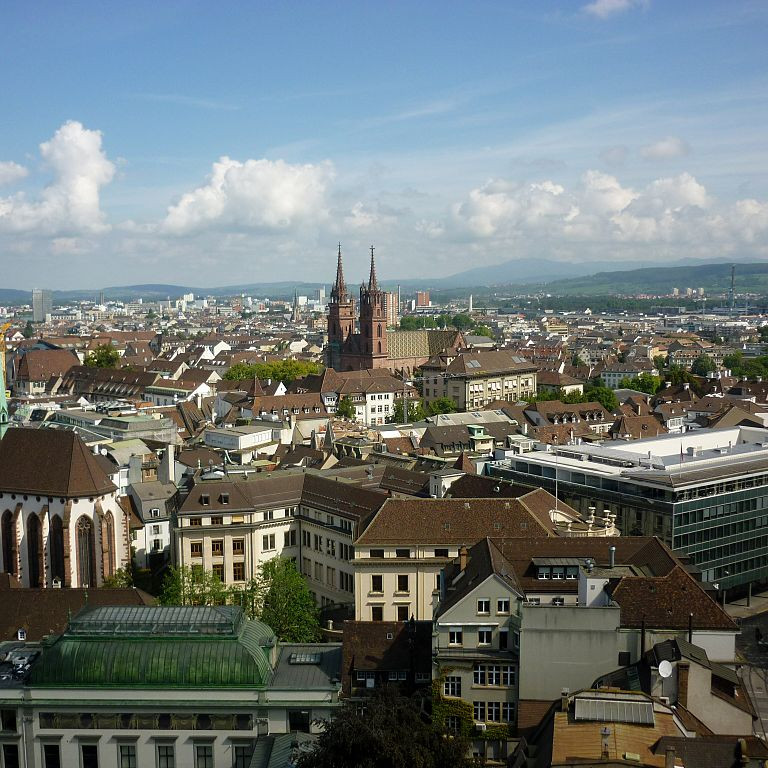
When:
10-11 November 2008
Where:
Basel, Congress Center
The sixth European registrar conference was organised by swissregistrar at the Congress Center in Basle.
During the two days of the conference, the following topics were addressed: different types of art spaces; collectors and museums; problems and opportunities arising from new museums in the Middle East; documentation and archiving of museum work; collecting, inventorying and exhibiting new media; ethical issues in museum work: laws, controls and procedures; museums and living artists: potentially conflicting interests?
Below are the themes and papers addressed, extracted from the conference programme.
Welcome address
Michael Koechlin, Head of Culture, Department of Education Canton of Basle City, and Elaine Vogel Keller, President of swissregistrars
A Different Type of Space for Art
Schaulager: A Different Space for Art
Theodora Vischer, Director, Schaulager, Münchenstein/Basel
Unlimited Accumulation? From Considerations of Preservation Principles to New Ways of Exhibiting
Catherine Duruel, Head of Collections, Centre Pompidou, Paris
Panel discussion:
Collectors and Museums – Towards a Better Partnership
Presentation: Bice Curiger, Curator, Kunsthaus Zürich
Maria de Peverelli, Art Consultant, Zurich
Thomas Koerfer, Collector, Zurich
New Museums in the Middle East: Issues and Opportunities
Dubai’s Aspiration to Become a Center for Global Culture
Michael Schindhelm, Director for Culture, Arts and Heritage, Dubai Culture and Arts Authority
Building the Future in Abu Dhabi: The Case of Saadiyat Island
Maria Paula Armelin, Registrar, Guggenheim Museum, New York
New Directions: The British Museum’s Loans and Travelling Exhibition Programme
Jill Maggs, Loans Manager, The British Museum, London
United in Diversity
Paul Williamson, Director Museums and Galleries, and Mark Hunt, Technical Manager, Constantine, London
Insuring Works of Art in the Emerging Markets of the Middle East
Robert Graham, Blackwall Green, London
Preserving for the Future: Documentation and Storage of Museum Work
PEVIAR, a Digital Storage Solution for Long-Term Archiving
Rudolf Gschwind, Head of Imaging& Media Lab, Basel
Small and Large Scale: Digital Preservation in Museums and in ICOM-CIDOC
Stefan Rohde-Enslin, Head of Institute for Museum Research – SMB-PK, Berlin
New Media Art: Collecting, Inventorying and Exhibiting New Media
The Preservation of Video Art: Collecting Data, Archiving, Lending
Agathe Jarczyk, Conservator, Videocompany Zofingen, Switzerland
Building-up a Permanent Collection of Audio-Visual Work
Elena Volpato, Curator Video Collection, Galleria Civica d’Arte Moderna, Turin
Ethical Issues in Museum Work: Laws, Controls and Procedures
Art without Borders? Ethical Challenges for Museums
Jean-Frédéric Jauslin, Director, Federal Office of Culture, Bern
CITES and Museums: How do Endangered Species Regulations Affect the Work of a Registrar?
Stephen Nash, CITES Secretariat, Geneva
Legal Immunity for Artworks for Temporary Loans to Switzerland
Benno Widmer, Head Specialized Body for the Transfer of Cultural Property, Federal Office of Culture, Bern
Panel discussion:
Museums and Living Artists: Potentially Clashing Interests?
Presentation: Stephen Dunn, Registrar, National Gallery, London
Sabina Lang, Artist, Burgdorf
Luca Trevisani, Artist, Berlin
Fabienne Eggelhöfer, Curator, Zentrum Paul Klee, Bern
Luisa Mensi, Conservator, Turin
Become a member of Registrarte to browse all content
I costi delle mostre
Alberto
È possibile ridurre i costi e ottimizzare le risorse nell’organizzazione delle mostre d’arte?
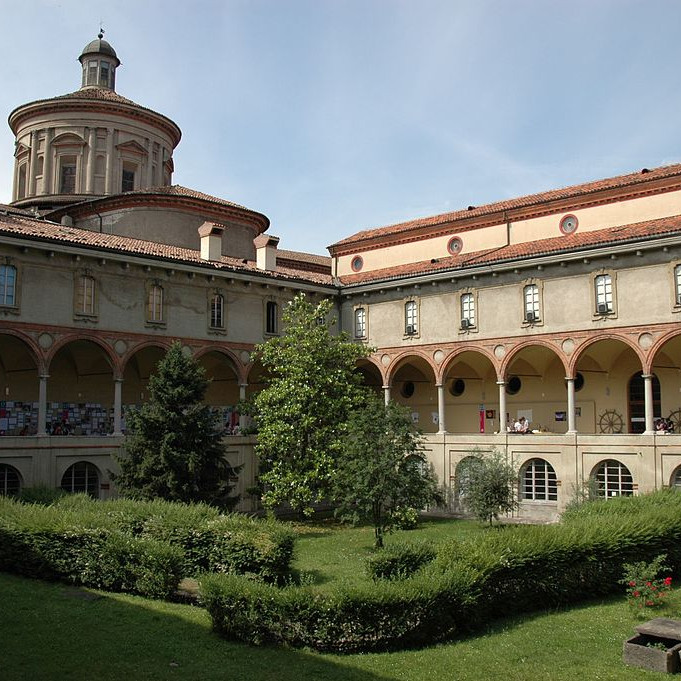
Quando:
Milano, 13 ottobre 2006
Dove:
Museo Nazionale della Scienza e della Tecnologia “Leonardo da Vinci”, Sala del Cenacolo
A cura di:
Registrarte
in collaborazione con
Regione Lombardia – Culture, Identità e Autonomie della Lombardia
Museo Nazionale della Scienza e della Tecnologia “Leonardo da Vinci”
Il 13 ottobre 2006 si è svolta a Milano, grazie alla collaborazione della Direzione Culture, Identità e Autonomie della Regione Lombardia e al Museo Nazionale della Scienza e della Tecnologia “Leonardo da Vinci”, che ha ospitato l’iniziativa, la giornata di studio dedicata al tema “I Costi delle mostre. E’ possibile ridurre i costi e ottimizzare le risorse nell’organizzazione delle mostre d’arte?”
Obiettivo della giornata, che rientra nell’ambito delle attività promosse da Registrarte per proporre ai propri associati e non occasioni di approfondimento legate alla professione del registrar, è stato quello di fare il punto su un tema di grande attualità, quello dei costi delle mostre per l’appunto, offrendo ai partecipanti un’occasione di confronto e riflessione, in modo da dare vita a un percorso di discussione e collaborazione che porti all’individuazione di procedure più efficaci e modalità di ottimizzazione delle risorse, partendo dall’individuazione di quelle voci di costo che pesano maggiormente sui budget delle mostre temporanee (assicurazione, trasporto, comunicazione, allestimento).
Relatori e temi:
Per un sistema di qualità del rapporto musei – mostre in Lombardia
Fiorenzo Galli
Direttore Generale Museo Nazionale della Scienza e della Tecnologia Leonardo da Vinci, Milano
Pietro Petraroia
Direttore Generale Culture, Identità e Autonomie della Lombardia, Regione Lombardia
Registrar, professioni museali, professioni del patrimonio culturale
Alberto Garlandini
Consigliere ICOM Italia e Dirigente Musei e Servizi Culturali, Direzione Culture, Identità e Autonomie della Lombardia, Regione Lombardia
La figura del Registrar nel museo e per le mostre: l’esperienza del Museo Poldi Pezzoli
Annalisa Zanni
Direttore, Museo Poldi Pezzoli, Milano
Introduzione ai temi della giornata
Maria Vittoria Marini Clarelli
Soprintendente alla Galleria Nazionale d’Arte Moderna, Roma
Vice-presidente Registrarte
Assicurazione commerciale e Garanzia di Stato: confronti e valutazioni
Brigitte Daprà
Registrar, Soprintendenza per il Polo Museale Napoletano
L’Indennità Governativa in Gran Bretagna e il contesto europeo
Freda Matassa
EU Collection Mobility Project
Piano di comunicazione: strategie e razionalizzazione dei costi
Valerio Pozzi
Consulente, Marketing dei Beni Culturali e Organizzazione mostre, Milano
Trasporto delle opere e gestione degli accompagnatori: contenere i costi garantendo i massimi standard di sicurezza e conservazione
Alexandra Andresen
Coordinamento organizzativo per le mostre, Scuderie del Quirinale, Roma
Tiziana Giuberti
Registrar, Gallerie d’Arte Moderna e Contemporanea di Ferrara
Economicità e spettacolarità: un esperimento alla Galleria Nazionale d’Arte Moderna di Roma
Federico Lardera
Architetto, Studio Lardera, Roma
Il conto del progettista – il difficile equilibrio tra qualità ed economicità
Luisella Italia
Architetto, Studio Dedalo – Architettura e Immagine, Torino
Madrid 2006
Alberto
5th European Registrars Conference
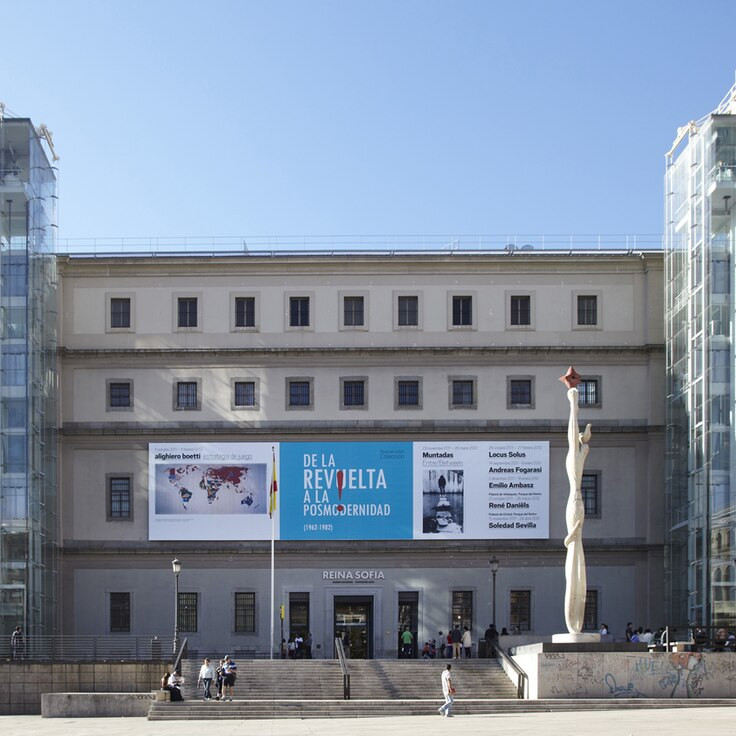
When:
13-14 November 2006
Where:
Madrid, Auditorium del Museo Nacional Centro de Arte Reina Sofia
The fifth European registrars’ conference, organised in the Auditorium of the Museo Nacional Centro de Arte Reina Sofia in Madrid by ARMICE, was attended by 460 registrars, museum professionals and sector operators.
Several topics of great interest were discussed during the two-day conference, including: how to combine architectural design and museum requirements; the development of the professional figure of registrars in Spain, Italy and Switzerland; quality management in museums; the mobility of collections and the conclusions of the Manchester 2005 and Helsinki 2006 conferences; European governmental indemnity and much more.
Below is a summary of the programme extracted from the proceedings.
Museology plans and architecture: how to combine good architectural design with specific museum needs
Chair: Víctor M. Cageao Santacruz, Head of Infrastructure. Subdirección General de Museos Estatales. Ministerio de Cultura
Form, Purpose, Use: Architecture and Museum in Search of an Unfitting Medium
Luis Grau Lobo, Director, Museo de León
Nieto Sobejano Arquitectos, S.L.
Fuensanta Nieto y Enrique Sobejano, Arquitectos
Tate Modern: The Good, The Bad and The Ugly
Stephen Dunn, Registrar – Tate Modern, London
Museum registrars: Does this profession really exist in Spain? The Spanish professional, similarities and differences with other European professionals
Chair: Cristina Mulinas Pastor, Head Registrar. Instituto Valenciano de Arte Moderno (IVAM)
Documentation and Registration of Cultural Items in State-Run Museums
Andrés Carretero Pérez, Director, Museo del Traje. Centro de Investigación del Patrimonio Etnológico
Neus Moyano Miranda, Registrar, Centro de Cultura Contemporánea, Barcelona (CCCB)
The Development of the Figure of the Registrar in Italy
Flaminia Bonino, Registrar. Azienda Speciale Palaexpo Palazzo delle Esposizioni & Scuderie del Quirinale, Roma
Nicole Rüegsegger
ARMICE – Spanish Association of Registrars from Museums and Cultural Institutions – Association launch and presentation
Julia Toffolo, Government Art Collection, London
Carmen Sánchez García, Chairman ARMICE
Session A: Beyond the work of art. Other types of collection(archaeology, numismatics, ethnography, science, contemporary art…) Specific problems, storage and control systems
Chair: Paloma Muñoz-Campos García, Curator. Museo Nacional de Artes Decorativas, Madrid.
Meetings and Partings in the Beyond. The ‘Other’ Collections and their Issues
Numismatic Pieces in Museums: Control, Storage Systems and Criteria for Classification in Reserve Areas
Carmen Marcos Alonso, Head of Numismatic Department. Museo Arqueológico Nacional
Installations: Documentation and Registration
Pureza Villaescuerna Ilarraza, Head of Art Store rooms, Museo Nacional Centro de Arte Reina Sofía, Madrid
The Boijmans Print-Room, an Experiment in RFID
Paul Teunissen, Registrar. Museum Boijmans Van Beuningen. Rótterdam
Session B: From quantity to quality: Quality management in Museums
Chair: Pilar Blesa, Head of Archive and Documentation. Museo Nacional de Arte de Cataluña (MNAC)
Quality as a Museum’s Thinking Tool: With Special Reference to Museum Registrar’s Departments
Pablo Hereza Lebrón, Head of Museum Documentation Department, Dirección General de Museos, Junta de Andalucía
Application of ISO Quality Management Standards at Spanish Museums
Rafael Azuar Ruiz, Director. Maritime Archaeology National Museum, Cartagena.
European Standardisation For Cultural Goods. The experience of the Guggenheim Museum Bilbao with total quality management
Anne De Wallens, Registrar. Musée du Louvre
The experience of the Guggenheim Museum Bilbao with total quality management
Roberto Cearsolo, Head of Administration and Finance, Museo Guggenheim, Bilbao
What do we do with our collections when there is a lack of storage space? Deposit/storage in and outside the museum: management, storage and control system problems
Chair: Eva Mª Alquézar Yáñez, Head of Collection. Subdirección General de Museos Estatales. Ministerio de Cultura
Managing the ‘Scattered Prado’: Change and Planning
Andrés Gutiérrez Usillos, Head Registrar. Museo Nacional del Prado, Madrid
Outside Storage at the Deutsches Historisches Museum – A Stroke of Luck?
Edith Michelsen, Registrar. Deutsches Historisches Museum, Berlin
Olga Ilmenkova, Head of Loan Agreement Department, The State Hermitage Museum, St Petersburg
Long Term Loans: Towards more Profitable Use of Collections
Susanna Pettersson, Senior Planning Officer, Art Museum Plan Development Department, The Finnish National Gallery, Helsinki
Informative session. EU Collection Mobility Project: conclusions of the Manchester-2005 and Helsinki-2006 Meet
Increasing the Mobility of Collections. A synopsis of the 2005 Manchester Conference
David McNeff, Loans Manager. National Portrait Gallery, London.
Mobility of Collections. Conclusions of the Helsinki-2006 Meeting
Anja Tullikki Huovinen, General Secretary. The Finnish Museums Association, Helsinki.
Lending: why and what for? Cultural goods loans: management problems and new lender requirements
Chair: Karina Marotta, Head of Exhibitions. Museo Nacional del Prado, Madrid.Speakers
A Rationale for Loan Fees (and their Exceptions)
Joan Llinares i Gómez, Financial Manager. Museo Nacional de Arte de Cataluña (MNAC), Barcelona
Anti-Seizure and the Legal Immunity of Works of Art on Loan in the European Union
Anna O’Connell, Registrar, The Art Loss
Development of a Standard European Loan Form
Birgid Pudney-Schmidt Chair Registrars Deutschland, Dusseldorf
What Should be Your Challenges Concerning Mobility of Collections?
Astrid Weij, Policy Officer on International Affairs, Netherlands Ministry of Education, Culture and Science, The Hague (Netherlands)
Informative session. Customs procedures: the current situation and new prospects
Protection of Cultural Assets
Dolores Gomez de Salazar, Customs Officer and Member of The Board of Assessment, Valuation and Exportation of works of the Spanish National Heritage
An Innovative Approach to Customs Management: The Experience of the Guggenheim, Museum Bilbao
Sonia Núñez, Registrar. Museo Guggenheim Bilbao
Informative session. Will a European Indemnity ever be achieved? TheState Guarantee: brief summary and update
Wishful Thinking? The Prospects for a European Indemnity
Freda Matassa, Independent Museum Consultant, United Kingdom
Will a European Indemnity Ever Be Achieved? The State Guarantee: Brief Summary and Update
Henrieta Galambos, Head of Legal and Registrars Department. Museums of Fine Arts, Budapest
Become a member of Registrarte to browse all content
Climatizzazione e imballaggio
Alberto
Focus su due aspetti cruciali nella movimentazione delle opere d’arte
“Clima e imballaggio: focus su due aspetti cruciali nella movimentazione delle opere d’arte”. Questo il tema della Giornata di Studio che si è svolta il 17 marzo 2004, a Firenze, su iniziativa di Registrarte, l’Associazione nazionale dei registrar costituitasi nel 2000 , con la presenza dei molti studiosi e professionisti del settore. Nella Sala convegni della Cassa di Risparmio, in via Folco Portinari, si sono incontrati centocinquanta operatori dei Beni Culturali, storici dell’arte e restauratori provenienti da tutta Italia, dai musei e spazi espositivi, dalle Soprintendenze e dagli Istituti di restauro e di ricerca.
Il programma dei lavori, introdotti da Cristina Acidini Luchinat, Soprintendente dell’Opificio delle Pietre Dure che ha collaborato all’evento, si è imperniato su una serie di interventi relativi alla sicurezza dei trasporti (Caterina Bon Valsassina, direttore dell’I.C.R.), alla valutazione ambientale come strumento propedeutico ( Elisabetta Giani , Fisico del laboratorio di fisica dell’I.C.R.), alla valutazione dei rischi per i trasporti su lunga distanza (Paul Schwartzbaum, restauratore capo della Solomon R. Guggenheim Foundation), alla conservazione preventiva negli spazi espositivi (Cristina Danti, direttore settore climatologia e conservazione preventiva dell’Opificio delle Pietre Dure), ai problemi di microclima nelle vetrine espositive (Roberto Boddi, capo tecnico, settore climatologia e conservazione preventiva dell’Opificio delle Pietre Dure), alla tutela delle opere d’arte in mostra (Maria Sframeli, direttore ufficio ricerche della Soprintendenza Speciale per il Polo Museale fiorentino).
Il dibattito – coordinato da Maria Vittoria Clarelli della Direzione per il Patrimonio storico, artistico e Demoetnoantropologico del Ministero per i Beni e le Attività Culturali – ha messo a confronto diverse esperienze su scala internazionale, con particolare riferimento al delicato aspetto della climatizzazione delle opere d’arte nei trasporti e negli spazi espositivi.
Nel corso del seminario è stata inoltre presentata la “Scheda ambientale” elaborata dall’I.C.R., strumento di grande utilità per valutare le condizioni ambientali e conservative di musei e sedi espositive.
Relatori e temi:
Presiede: Maria Vittoria Marini Clarelli
Dirigente Servizio II, Direzione generale per il patrimonio storico, artistico e demoetnoantropologico, Roma
Introduzione ai temi della giornata di studio: l’applicazione della ricerca scientifica alla conservazione delle opere d’arte
Cristina Acidini Luchinat
Soprintendente Opificio delle Pietre Dure, Firenze
La Sicurezza dei Beni Culturali nel trasporto
Caterina Bon Valsassina
Direttore, Istituto Centrale per il Restauro, Roma
La scheda ambientale come strumento propedeutico al trasporto di opere d’arte
Elisabetta Giani
Fisico, Laboratorio di fisica e controlli ambientali, Istituto Centrale per il Restauro, Roma
Le priorità nella valutazione dei rischi. Teoria e pratica nella climatizzazione dei trasporti su lunga distanza
Paul Schwartzbaum
Restauratore Capo, Solomon R. Guggenheim Foundation, New York
Conservazione preventiva in musei e spazi espostivi
Cristina Danti
Direttore sezione climatologia e conservazione preventiva, Opificio delle Pietre Dure, Firenze
Vetrine espositive. Problemi e soluzioni di microclima
Roberto Boddi
Capotecnico settore climatologia e conservazione preventiva, Opificio delle Pietre Dure, Firenze
La tutela delle opere in mostra: aspettative e metodi a confronto
Maria Sframeli
Direttore Ufficio Ricerche, Soprintendenza Speciale per il Polo Museale Fiorentino
Si ringrazia la Banca CR Firenze.
Il coffee-break e la colazione di lavoro sono stati gentilmente offerti da:
Arteria Srl, Borghi International SpA, Cienne Transport Srl, Gondrand SpA, Montenovi Srl, Panzironi Art Transport Srl, Piccin Trasporti d’Arte Srl, Tratto Srl, Züst Ambrosetti SpA.
Wolfsburg 2004
Alberto
4th European Registrars Conference
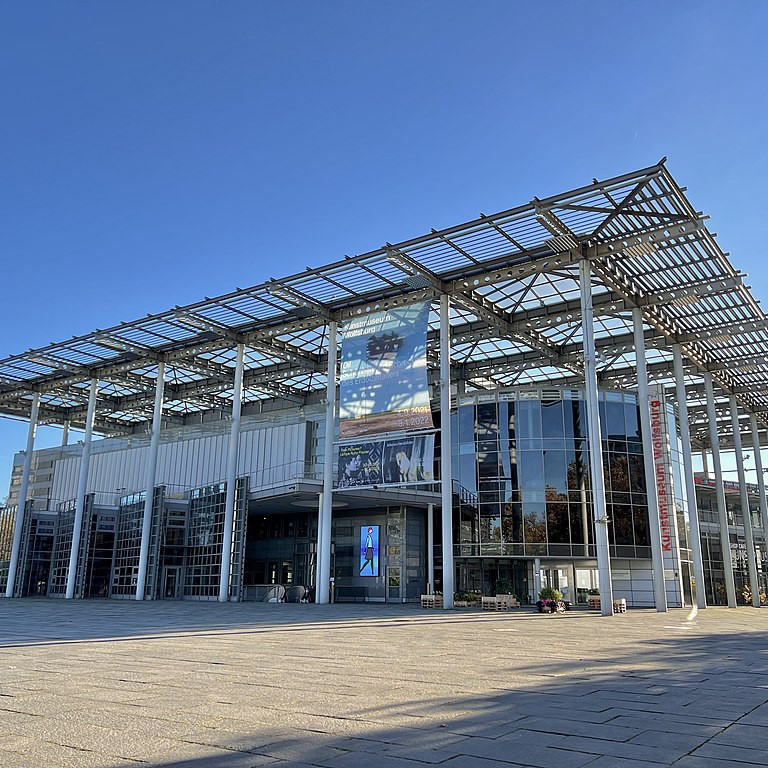
When:
15-16 November 2004
Where:
Wolfsburg, Kunstmuseum
The conference, organised by the German registrars’ association, addressed topics such as government indemnity, the opportunities and challenges posed by the enlargement of the European Union, cost reduction in the organisation of exhibitions, working with materials and objects unconventional in quality and size, and more generally with contemporary works of art.
Here is the programme of the interventions of the two days.
Conference opening.
Gijs van Tuyl, Director, Kunstmuseum Wolfsburg.
Birgid Pudney-Schmidt, Manfred Müller, Registrars Deutschland
Government Indemnity: The financial benefit to loans and exhibitions.
Chair: Stephen Dunn, Registrar, Tate Modern, London.
UK Indemnity
Hillary Bauer, Head of the Cultural Property Unit, Department Culture, Media an Sport, London.
US Government Indemnity
Alice Welihan, Indemnity Administrator, National Endowment for the Arts, Washington
National Indemnity in Denmark
Henrik Bjerre, Danish Ministry of Culture, Statens Museum for Kunst, Copenhagen
Spanish Government Indemnity
Veronica Castillo, Museo Nacional Centro de Arte Reina Sofia, Madrid
Italian Indemnity
Emanuela Fiori, Soprintendenza per il Patrimonio Storico, Bologna
German Federal and State Indemnities
Stephan Zilkens, Oskar Schunck AG, Cologne
The Opportunities and Challenges of the Expanding European Union.
Chair: Eva Gebhard, Head of Art Handling, Kunstmuseum Wolfsburg.
Working with the treasures of the Moscow Kremlin
Maria Bogoslovskaya, Exhibitions Coordinator, State Kremlin Museum, Moscow
International loans from Polish Museums
Tomasz Zaucha, Registrar, Muzeum Narodowe W Krakowie
How to organize shows whithout a registrar
Riitta Rajalin, Exhibition Technician, Kiasma Museum, Helsinki
The situation of the museums in Greece
Lila de Chaves, Hellenic Federation of Friends of Museums, Athen
Maximum Value, Minimum Cost: Reducing exhibition costs.
Chair: Tina Köhler, Exhibition Organisation, Haus der Kunst, Munich.
Budgeting exhibitions
Martine Silie, Chef du Service des Manifestations. Centre Pompidou, Paris
Estimates – how to ask for, how to read them
Markus Dennig, Masterpiece International Ltd, New York
Shipping and Couriers
Dr. Manfred Müller: Project Manager, Kunstmuseum Wolfsburg
Reducing insurance cost
Michael Kuhn, Kuhn & Bülow Insurance Brokers, Berlin
Beyond Oil on Canvas: Working with unconventional materials.
Chair: Katharina Nettekoven, Registrar, Kunstsammlung -Nordrhein-Westfalen, Duesseldorf.
Issues with the Inventory, Packing and Storing of Contempory Art – Example “Uno Momento” by Jason Rhoades
Laura Bechter, Registrar, Hauser & Wirth Collection, St. Gallen
Challenges of modern art and new materials
Pip Laurenson, Media Conservator, Tate Modern, London
Moving Beuys from Mönchengladbach to Berlin
Ernst Fuchs, Fuchs Realisation GmbH, Bochum
Handling Contemporary photographs: Challenges and Comforts
Martin Jürgens, Photo Conservator, Hamburg
Current collection and exhibition management systems.
Chair: Anne Barz, (Leitung Fachliche Dienste), Hamburger Kunsthalle.
MuseumPlus at K20K21 – Organizing the Chaos
Dr. Maria Müller-Schareck, Curator, Kunstsammlung Nordrhein-Westfalen, Duesseldorf
Gallery Systems – planning implementations to meet your objectives
Tim Henbrey, Gallery Systems, London
ArteFact
Wolfgang Müller-Kaufmann, CBM Informationslogistik GmbH, Vienna
Rapid Exhibitions
Jeremy Gilmore, CJG Consultants Ltd, London
Too big, too difficult, too heavy: Moving and installing problem objects.
Chair: Birgid Pudney-Schmidt, Chair Registrars Deutschland e.V.
Maurizio Cattelan – How to bring an olive tree into a Staircaise
Eva Gebhard, Registrar, Kunstmuseum Wolfsburg
Moving Rembrandt’ s “Nightwatch”
Wim Hoeben, Head of Material Collections Management, Rijksmuseum Amsterdam
Moving Concorde – The Impossible made Possible
Alistair Dodds, Curator of Transport, National Museums of Scotland, Edinburgh:
Moving with Damien Hirst
Guy Morey, Momart Ltd, London











